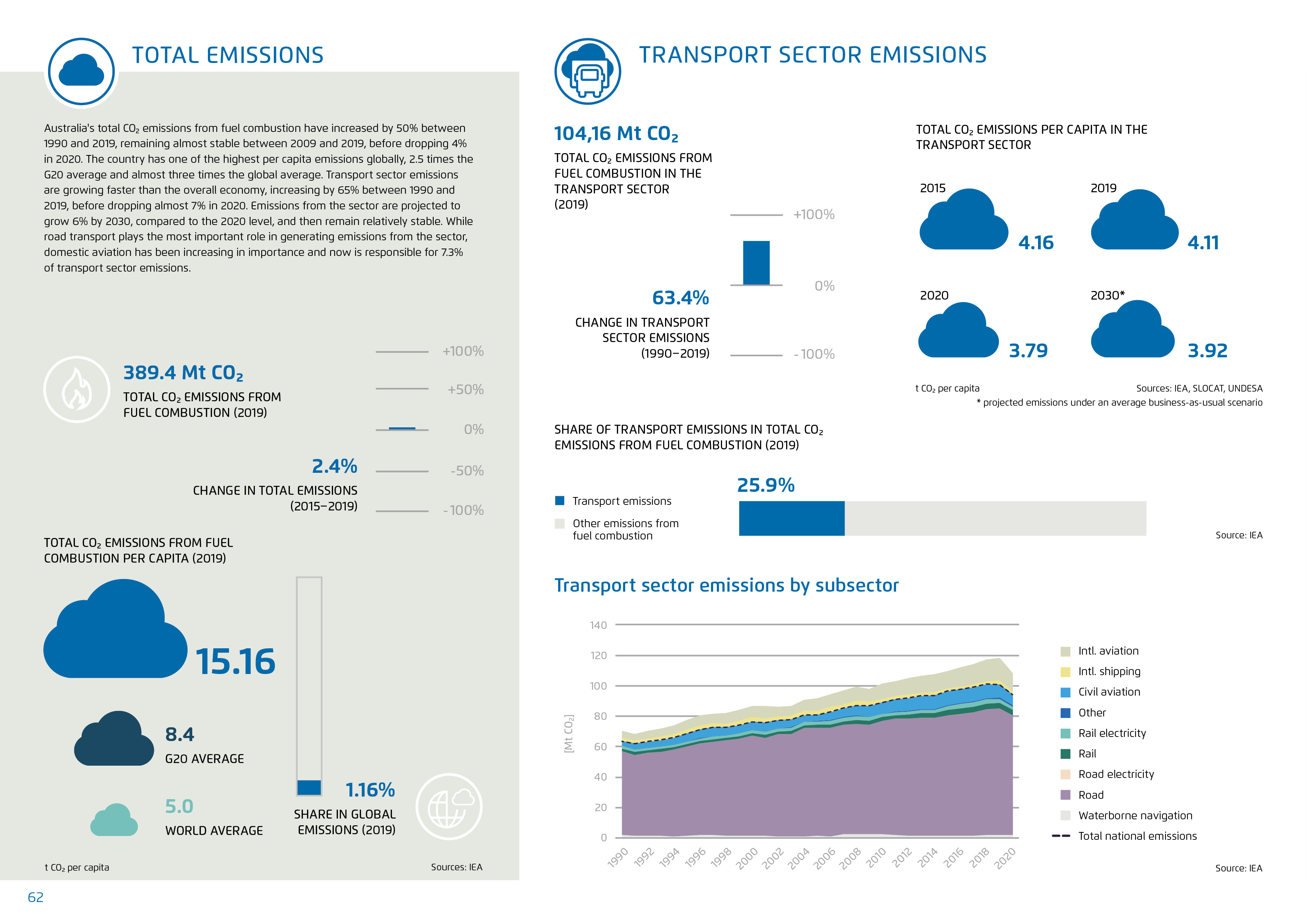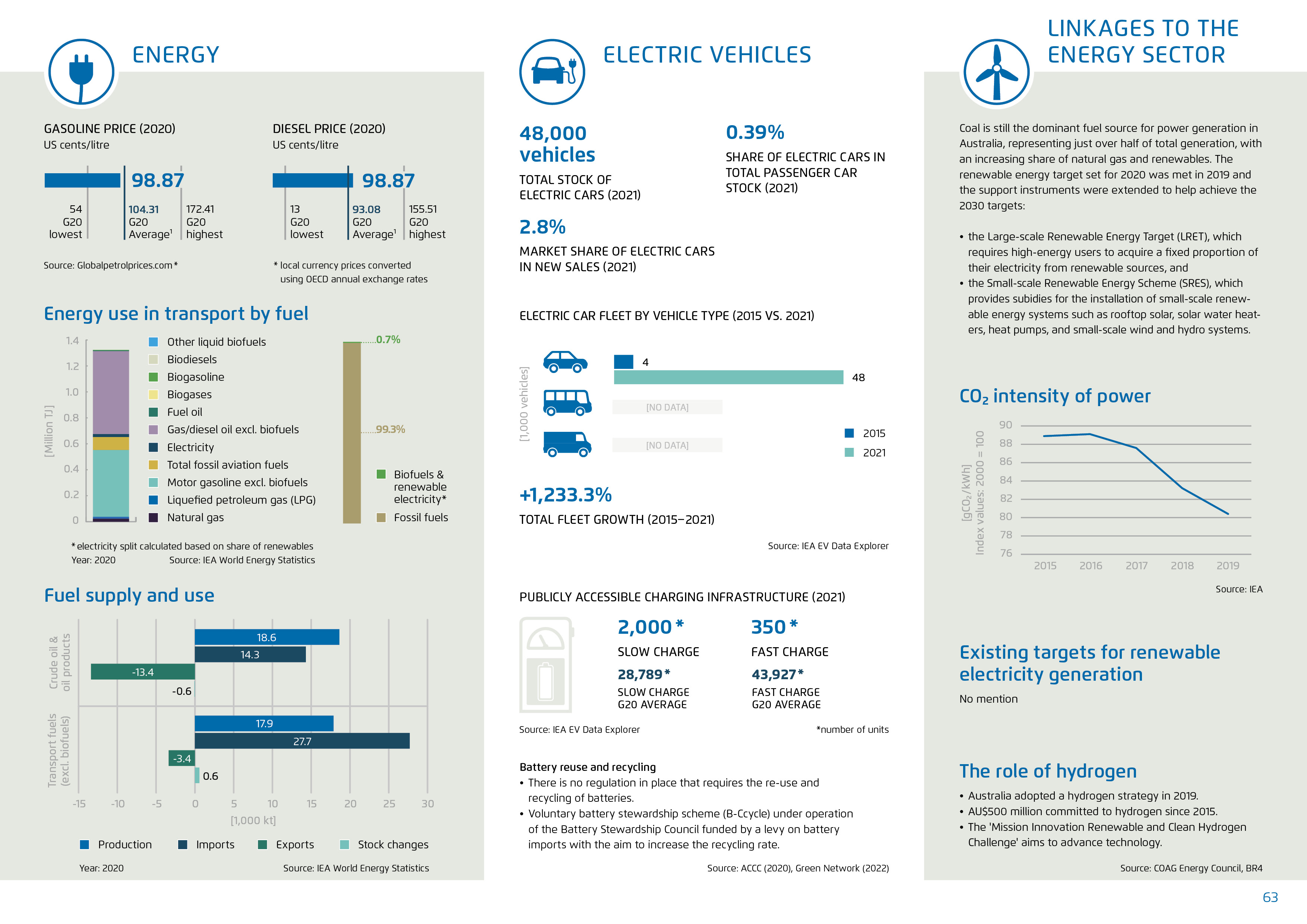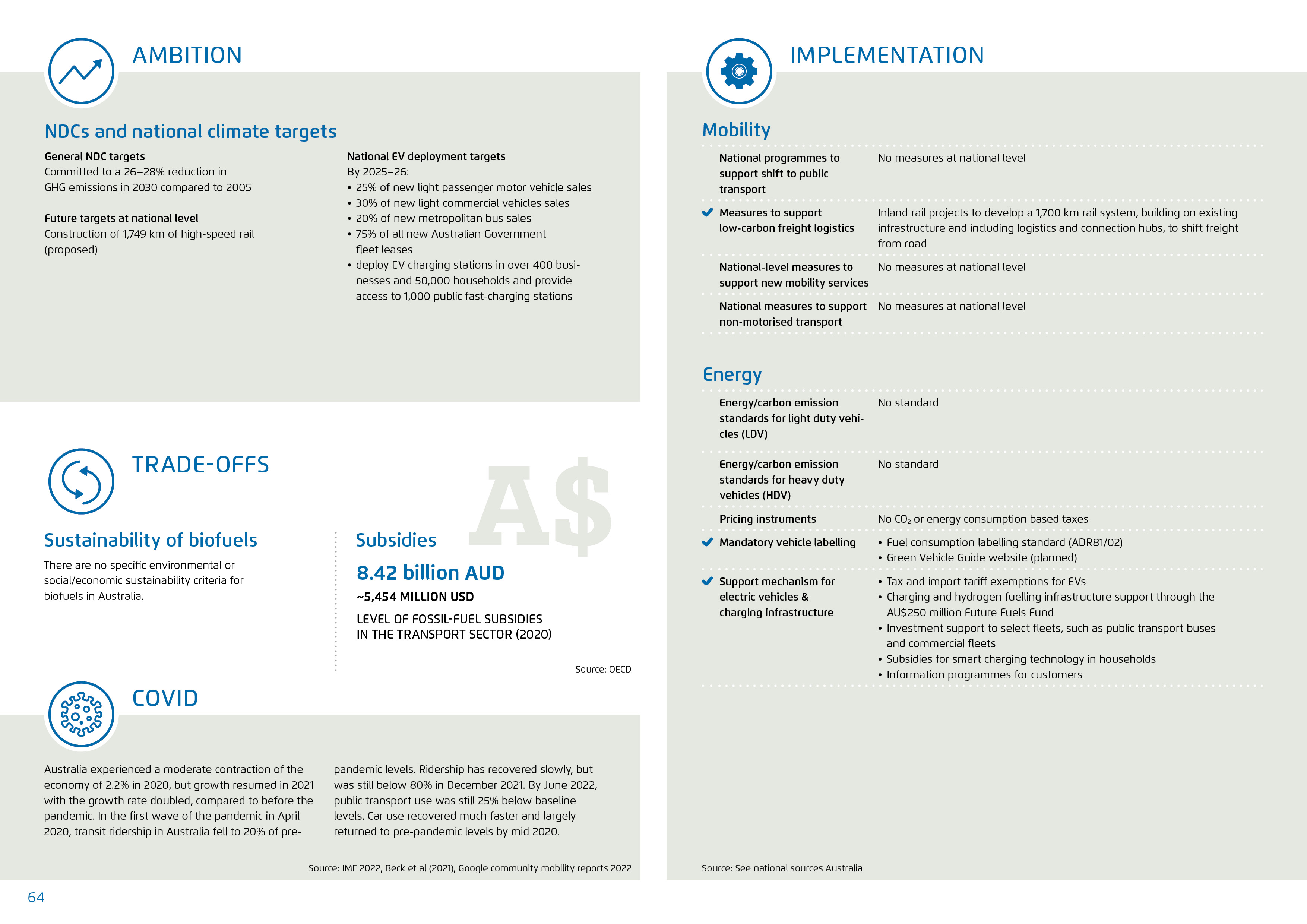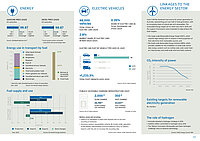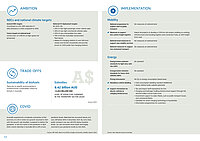This content is also available in: German
Australia
Net-zero target: 2050 / Motorisation rate (2020): 763,3 vehicles per 1,000 inhabitants / Change in transport sector emissions (1990-2019): 63,4 % / Projected total CO2 emissions per capita in the transport sector in 2030: 3,92 t
Transport in Australia is characterised by long travel distances. The country's population is concentrated along the eastern and southeastern coastlines, leaving large swathes of the country sparsely populated. Given the size of Australia and the concentration of the population inselected areas, air travel plays a large role. 95% of the large rail systemoutside urban centres is used for freight. Extensive urban sprawl andlow-density suburban development lead to long commuting times andheavy reliance on personal vehicle ownership. In freight, rail transportleads in terms of tonne-km travelled, but coastal freight also capturessignificant transport volumes.
Australia's goal of reducing emissions 26–28% below 2005 levels by 2030 does not include a specific transport sector target. Transport targets and measures at the national level are scarce, largely focusing on electric vehicles. Australia is one of the few G20 countries that does notyet have energy or CO₂ related emission standards for light duty vehicles.
Key figures on transport and climate
Published in Towards Decarbonizing Transport 2023.


